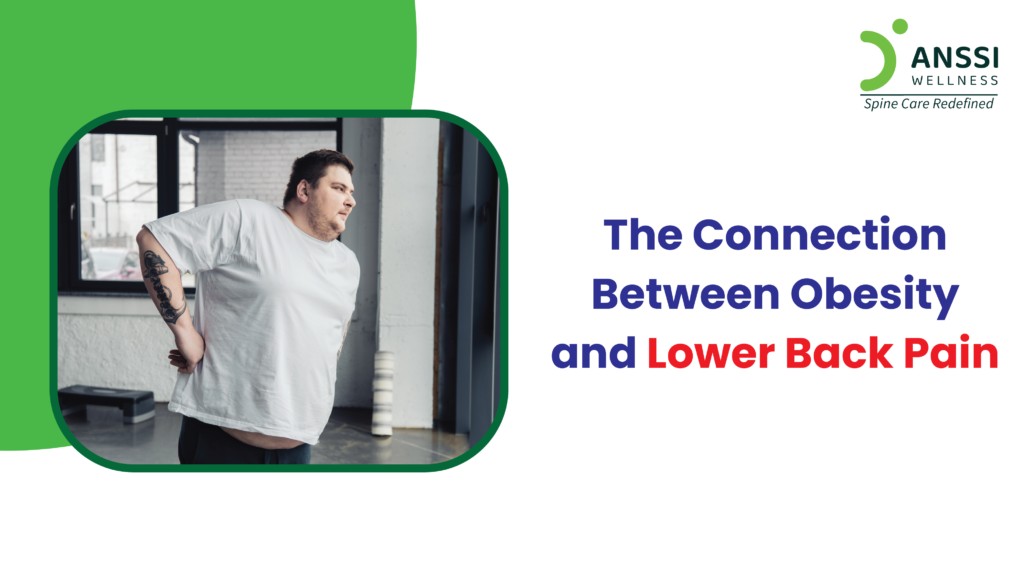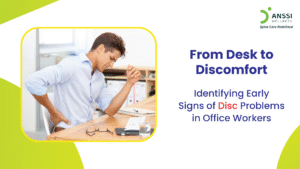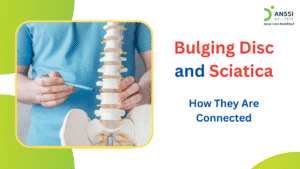Millions of people worldwide suffer from obesity, which is becoming a major global health concern. While most people are aware of obesity’s links to diabetes, heart disease, and joint problems, its impact on spinal health is often overlooked. One of the most common complaints among overweight individuals is lower back pain, which can make everyday tasks difficult and reduce overall quality of life.
The spine supports the body’s weight, and excess weight puts additional strain on the discs, joints, and muscles. This leads to pain, inflammation, reduced mobility, and an increased risk of spinal disorders such as herniated discs and sciatica.
Fortunately, effective, non-surgical solutions exist for managing weight and alleviating back pain. Let’s explore how obesity contributes to lower back pain and the best strategies for pain relief and spinal health.
How Excess Weight Affects the Spine
Excess body weight can significantly impact spinal health, increasing the risk of chronic lower back pain and spinal disorders. Here’s how:
Increased Spinal Load
The spine is designed to support the body’s weight while maintaining flexibility and movement. However, when a person is overweight, the spinal discs, joints, and muscles have to work harder to support the extra load.
- Increased pressure on spinal discs can cause them to bulge or herniate, leading to nerve compression and pain.
- Excess weight accelerates degeneration of spinal joints, contributing to arthritis and chronic back pain.
- The lumbar (lower back) region is particularly vulnerable, as it bears most of the body’s weight.
Over time, this added stress weakens spinal structures, increasing the likelihood of disc degeneration and persistent lower back pain.
Postural Imbalances Due to Weight Distribution
Carrying excess weight, especially in the abdominal area, shifts the body’s centre of gravity forward. To compensate, the spine arches excessively (lumbar lordosis), leading to postural imbalances.
- Poor posture alters spinal alignment, causing muscle strain and joint stress.
- Over time, these imbalances weaken core muscles, making it harder to maintain a healthy posture.
- This can lead to increased back pain, stiffness, and difficulty in movement.
Inflammation and Reduced Mobility
Obesity is linked to chronic inflammation, which plays a significant role in lower back pain.
- Fat cells release inflammatory chemicals (cytokines) that can contribute to joint pain and tissue damage.
- Inflammation can accelerate spinal degeneration, worsening conditions like sciatica and osteoarthritis.
- Reduced mobility due to pain leads to a sedentary lifestyle, further increasing weight gain and worsening back problems.
This cycle of weight gain, inflammation, and decreased movement creates a vicious loop that must be addressed with effective lifestyle changes.
Effective Strategies for Managing Weight and Back Pain
Fortunately, several non-surgical solutions can help manage both weight and lower back pain.
1. Healthy Diet and Weight Loss
Maintaining a healthy diet is essential for reducing excess weight and alleviating back pain.
A well-balanced diet:
- Supports healthy spinal discs and joints by providing essential nutrients.
- Helps reduce inflammation, decreasing chronic pain symptoms.
- Prevents further weight gain, reducing spinal pressure.
Best Foods for Spinal Health:
- Anti-inflammatory foods: Leafy greens, berries, nuts, and turmeric
- Omega-3 fatty acids: Found in salmon, flaxseeds, and walnuts
- Healthy fats: Avocados, olive oil, and nuts
- Lean proteins: Chicken, eggs, and tofu to support muscle strength.
Reducing processed foods, sugary drinks, and excess carbohydrates can also help manage weight effectively.
2. Regular Low-Impact Exercises
Exercise is crucial for strengthening the spine, improving posture, and reducing back pain. However, high-impact activities (like running or heavy weightlifting) can worsen back pain for overweight individuals.
Best Low-Impact Exercises for Back Pain Relief:
- Swimming and Water Therapy: Reduces pressure on joints while improving mobility.
- Walking: Helps maintain weight and strengthens spinal muscles.
- Yoga and Stretching: Improves flexibility, posture, and core strength.
- Stationary Biking: Provides cardio benefits without straining the spine.
Regular movement helps reduce stiffness, enhance spinal flexibility, and promote overall weight loss.
3. Non-Surgical Spinal Decompression Treatment
One of the most advanced, non-surgical treatments for back pain caused by obesity and disc problems is spinal decompression treatment.
How Non-Surgical Spinal Decompression Treatment Works:
- Gently stretches the spine, reducing pressure on spinal discs and nerves.
- Allows for the retraction of protruding discs by creating space between vertebrae.
- Improves blood flow and nutrient delivery, promoting natural healing.
Benefits of Spinal Decompression Treatment:
- Pain relief without surgery: Targets root causes of back pain.
- Restores spinal alignment: Corrects postural imbalances.
- Improves mobility: Reduces stiffness and enhances movement.
- Non-invasive and drug-free: A safe, long-term solution for back pain relief.
About ANSSI:
ANSSI Wellness focuses on improving the quality of life for patients suffering from spinal issues, aiming to provide relief where other conventional treatments have failed. Through advanced non-surgical spinal decompression treatment, ANSSI is committed to helping patients avoid surgery and recover in a safe, effective, and compassionate environment.
Connect with ANSSI Wellness on LinkedIn, Instagram, and Facebook for expert guidance.



